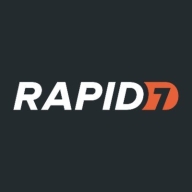

CloudStack and Rapid7 InsightCloudSec are competing in the cloud management and security space. Rapid7 InsightCloudSec appears to hold an advantage due to its comprehensive features and perceived value for investment.
Features: CloudStack provides open-source cloud orchestration, extensive hypervisor support, and flexible integration options. Rapid7 InsightCloudSec offers real-time security monitoring, compliance management, and automation processes that enhance cloud security.
Room for Improvement: CloudStack could improve its user interface and simplify its deployment processes. Rapid7 InsightCloudSec may benefit from enhancing its pricing model and expanding its support for more cloud service providers.
Ease of Deployment and Customer Service: CloudStack offers a flexible, self-service deployment model but may involve a steeper learning curve. Rapid7 InsightCloudSec ensures a streamlined deployment with proactive customer service, allowing faster setup and efficient support.
Pricing and ROI: CloudStack's cost-effective setup and high customization potential provide favorable ROI for tailored configurations. Rapid7 InsightCloudSec, though potentially higher in initial costs, offers strong ROI with its security and compliance features attractive for security-focused enterprises.
| Product | Market Share (%) |
|---|---|
| CloudStack | 3.9% |
| Rapid7 InsightCloudSec | 0.6% |
| Other | 95.5% |


| Company Size | Count |
|---|---|
| Small Business | 13 |
| Midsize Enterprise | 6 |
| Large Enterprise | 12 |
Rapid7 InsightCloudSec is a comprehensive CSPM tool catering to cloud security across Docker and Kubernetes workloads, ensuring rigorous data classification and protection, focusing on AWS and Azure platforms.
Organizations leverage Rapid7 InsightCloudSec for securing cloud environments, integrating smoothly into Kubernetes settings for extensive security oversight. This tool addresses data protection with governance and access controls, providing centralized visibility and alert mechanisms. Users depend on its threat detection capabilities, easing data security management on AWS and Azure. The platform integrates automated processes and agentless scanning to foster an understanding of cloud security dynamics. Enhancements in CNAPP management and more intuitive interfaces could further streamline its use.
What are the most important features of Rapid7 InsightCloudSec?In financial sectors, Rapid7 InsightCloudSec is critical for safeguarding sensitive information and ensuring compliance. Healthcare industries use it to protect patient data, adhering to strict regulatory standards. E-commerce businesses appreciate its ability to secure transaction data while maintaining service availability through reliable threat detection and mitigation strategies.
We monitor all Cloud Management reviews to prevent fraudulent reviews and keep review quality high. We do not post reviews by company employees or direct competitors. We validate each review for authenticity via cross-reference with LinkedIn, and personal follow-up with the reviewer when necessary.